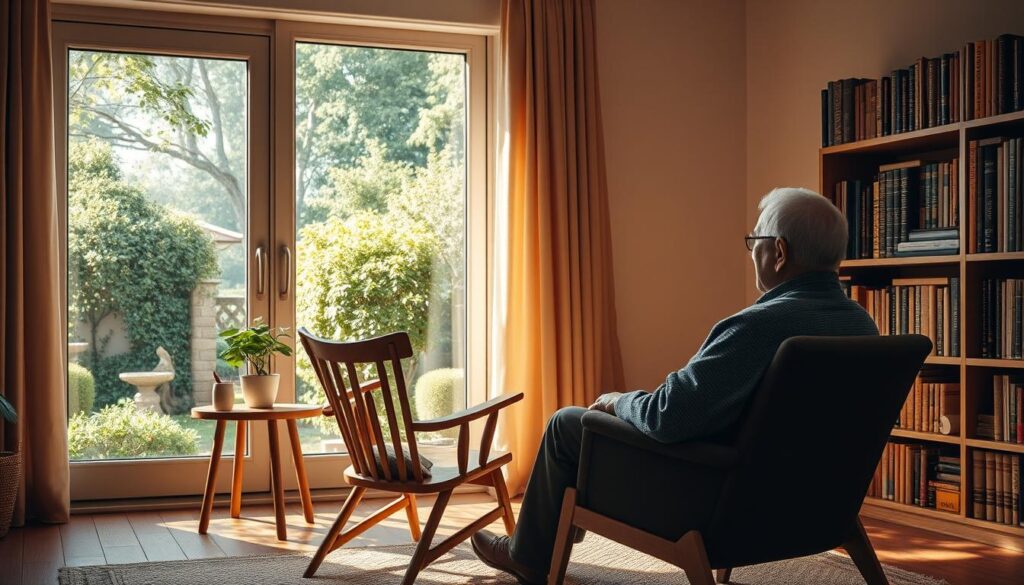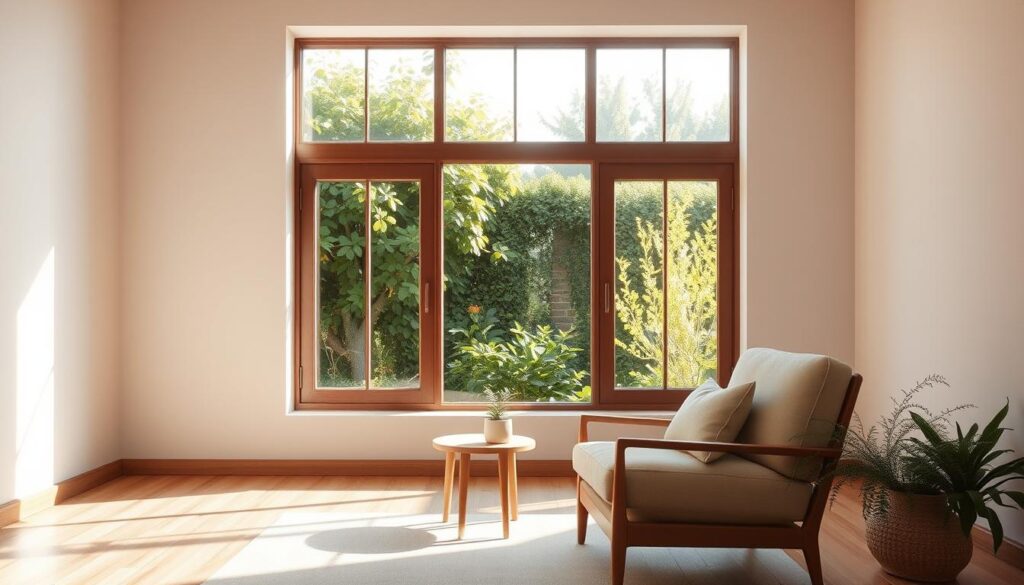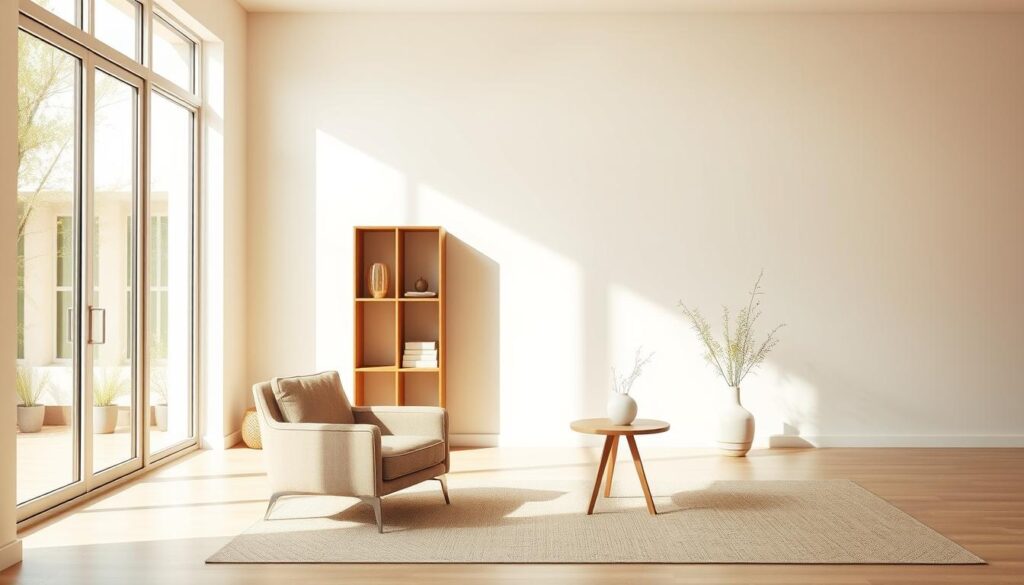How and Why I Chose Simple Living After 60. A few years ago, I realized “more” wasn’t making me happy. I wanted calm, clarity, and purpose. So, I started simplifying: my home, routines, and mind.
Choosing a minimalist lifestyle changed me. It helped me focus on what’s important and find joy in simplicity. My journey into intentional living after 60 showed me it’s about letting go of clutter. It’s about making room for what brings me joy and fulfillment.
Key Takeaways
- Discovering the benefits of a minimalist lifestyle after 60
- Simplifying your home and routines for a more intentional life
- Finding joy and fulfillment in simplicity
- Creating space for what truly matters
- Embracing a simpler way of living for a more purposeful life
The Awakening: When “More” No Longer Meant “Better”
When I turned 60, I started to think differently. I questioned always wanting more. This was the start of my journey to embrace minimalism.
The Tipping Point in My Sixties
Turning 60 was a big deal for me. It was a turning point. I saw that all the stuff and commitments didn’t make me happy. They just made my life messy.
Craving Calm, Clarity, and Purpose
I wanted a simpler life. One that was calm, clear, and had purpose. Simplifying life in retirement was my dream. I wanted to find joy and fulfillment again, not just more stuff.
My Life Before Embracing Minimalism
Before I started living simply, I always wanted more. More stuff, more wins, more praise. This need was driven by what others expected and my own dreams.
This chase led to a messy and complicated life.
Decades of Accumulation and Achievement
I collected a lot over the years. Things like furniture, clothes, gadgets, and keepsakes. Each item showed off my successes.
But all these things made my home too full. It was hard to find peace.
I also had too many tasks and duties. This left me little time to relax or think.
The Hidden Costs of a Cluttered Existence
Having too much stuff and being too busy was hard on me. It made me stressed and tired.
I felt overwhelmed, anxious, and always on edge. The mess also hurt my relationships. I spent too much time on stuff and not enough time with family and friends.
This made me start my journey to minimalism. It was the start of a simpler, more fulfilling life.
Why I Chose Simple Living After 60
When I turned sixty, I looked back at my life. I thought about what I wanted in my retirement. Simple living, or intentional living after 60, seemed right to me. It promised a life free from clutter and full of meaning.
Redefining Success in Retirement
Retirement changed my life a lot. I started to think differently about success. It wasn’t about work or stuff anymore. It was about living true to myself.
Moving Beyond Career Identity
My career was a big part of me for years. But in retirement, I needed to move beyond this identity. I wanted to discover new parts of myself.
Finding New Measures of Fulfillment
I looked for new ways to feel fulfilled. I focused on experiences and people that made me happy. This journey led me to a minimalist lifestyle and a simpler life.
Creating Space for What Truly Matters
Simple living helped me make room for what’s important. I cleaned up my space, simplified my days, and made deeper connections. It was a big change.

As I kept going, I learned that redefining success in retirement was key. It’s about letting go and embracing the new. It’s about finding joy in the simple things and living with purpose.
My Three-Phase Journey to Simplicity
Choosing simplicity in my sixties changed my life. I found that simplifying life is a journey with three main parts.
Simplifying My Home Environment
The first step was making my home simpler. This was key to living a minimalist life.
The Downsizing Process
I started by getting rid of things I didn’t need or love. This was freeing, but hard too.
Creating a Peaceful Living Space
After decluttering, I made my home calm and peaceful. Now, it feels bigger and more relaxing.

Streamlining Daily Routines and Commitments
The second part was making my daily life simpler. I cut out things that weren’t important and focused on what made me happy.
Cultivating a Minimalist Mindset
The third part was learning to love simplicity. I learned to be happy with what I have, not always wanting more.
This journey taught me that simplicity in retirement is more than just cleaning up. It’s about living a simple, clear life.
The Transformative Benefits of Minimalistic Retirement Living
Embracing simplicity has changed my life for the better. It’s not just about less stuff. It’s about having a clearer mind and focusing on what’s important.

Financial Freedom and Reduced Stress
Living simply has given me financial freedom. I spend less and worry less about money. Now, I can enjoy life’s moments more.
Less stuff means less stress. I have more time for myself and fun activities. It’s a big relief.
Deeper Connections and Relationships
Simple living has made my relationships stronger. I spend more time with loved ones. It’s made my life richer.
This focus on people has given me a strong sense of community. It’s a big part of my happiness in retirement.
Rediscovered Purpose and Joy in Simplicity
Minimalism has brought me joy and purpose. I now enjoy the simple things more. It’s made life more beautiful.
Appreciating the little things has changed my life. I find happiness in everyday moments. It’s a wonderful feeling.
Overcoming Obstacles in Simplifying Life in Retirement
Simplifying life after 60 was tough. It needed careful thought and planning. I faced many challenges that made me adapt and stay strong.
Managing Resistance from Family and Friends
Family and friends had a hard time understanding my choice. They thought I was giving up memories or things I loved. I explained how simplicity made me happier.
Joshua Becker, a famous minimalist, said, “The things you own own you.” This helped others see my point.
The Emotional Challenge of Letting Go
It was hard to let go of things that reminded me of good times. I had to think carefully about what to keep and what to let go of.
Strategies for Parting with Sentimental Items
I found ways to make it easier. I took pictures of things I couldn’t keep. This way, I kept the memories without the clutter. I kept a few special items and let go of the rest.
“The memories are not in the things, but in me,” I often told myself.
Finding Peace in the Process
It was important to find peace in simplifying. I thought about the good things, like less stress and more time for fun. This kept me on track. Simplifying is a journey, not just a goal.
Finding Happiness in Minimalism: Reflections on My Simple Living Journey
Reflecting on my simple living journey after 60, I feel joyful and content. Minimalism has changed me, helping me see what’s truly important. It’s taught me to find happiness in simple things.
My journey showed me that happiness comes from living on purpose, not from stuff. By making my home simple and my life organized, I feel free and clear. This mindset has given me a new sense of freedom.
Minimalism isn’t just about getting rid of things. It’s about making room for what truly matters. For me, that means spending time with loved ones, doing things I love like traveling the U.S.A., and living true to myself.
Looking back, I see that simplicity is a journey, not a final goal. It takes work and dedication, but it’s worth it. I hope others will try simple living and find happiness in simplicity, too.



